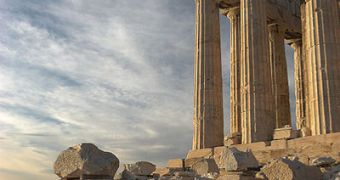The Ancient Greeks are famous for the magnificent temples they built to honor their gods, some of which precede many other religions that are currently present in Europe. The constructions were truly architectonic wonders, considering the fact that the technology at the time, namely more than 2,000 years ago, didn't exactly allow for building skyscrapers. The Parthenon, built in the 5th century BC on the Athenian Acropolis, in honor of goddess Athena, is a good example of this. However, researchers started recently wondering what exactly made the Greeks choose some spots over others.
In order to answer this question, the team of investigators analyzed local geology, topography, soil, and vegetation near 84 classic Greek temples – dating between 480 and 338 BC – and cross-referenced these pieces of information with historical accounts written by Herodotus, Homer, Plato, and other philosophers and historians of the time. The main goal of the research was to establish if a certain location, with all its components, played an important part in builders establishing what deity would be worshiped at that location.
Gregory J. Retallack, an investigator at the University of Oregon in Eugene, the US, who at first found no clear pattern between the temples and the type of soil they were built on, was in charge of the research team. Finally, when he correlated the soil types with the deities worshiped there he got a match. Depending on the god or goddess, a certain variety of soil was used, and their temples were built on no other ground. For example, the goddess of grain and fertility, Demeter, and the god of wine, Dionysos, both had their temples constructed on rich and fertile soils, most suitable for growing crops.
On the other hand, the virgin huntress Artemis, and her brother, the sun god Apollo, had temples built only on rocky and arid terrains, which were fit just for nomadic herding, and not for continuous use. The water gods were only worshiped on maritime terraces, which were by nature too fit for agriculture. This type of separation clearly proves that the Greeks had no intention of letting their offerings to one god reach another by mistake. So, they made this differentiation in the clearest manner possible.
Retallack detailed his finds in a recent issue of the journal Antiquity, where he explained that selecting a temple location had as much to do with livelihood as it had to do with religion. The researcher hypothesized that people wanted to build the gods sanctuaries where they could feel at home, each close to the domain they watched over.

 14 DAY TRIAL //
14 DAY TRIAL //